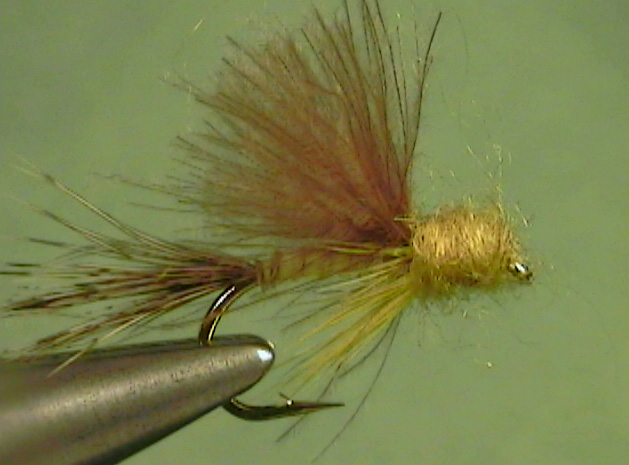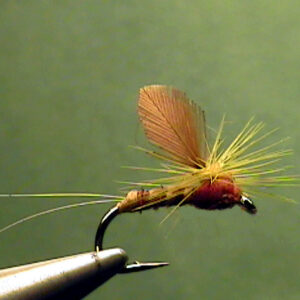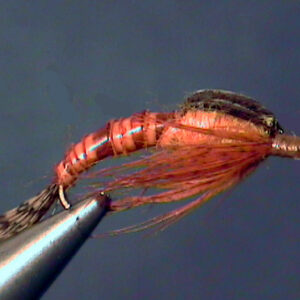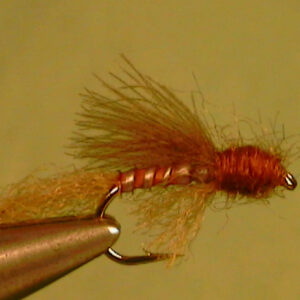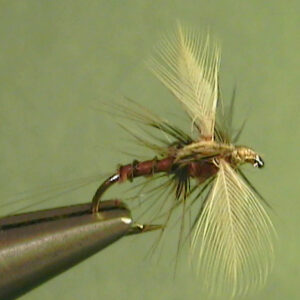Hook Size 10/12
The American March Brown nymphs rise from the bottom to the surface skim to hatch.
The problem you face is recognizing a hatch. As we have previously said, normally you
won’t see many of the duns at any one time during a hatch. It may be just one or two
every once in a while. The hatch can last for a couple of months and there’s no particular
time of day that they hatch. They may come off anytime from mid-morning to dark. It
depends on the weather which varies considerably during the long hatch period. If you
see one March Brown hatch you can safely assume there are more nymphs ready to
hatch in that same area, or at least there will be at some time in the near future.
Another thing to consider is that almost any area of fast water has March Brown nymphs,
so choosing one area over another is usually not the answer. If you are fairly sure that
you are fishing an area of the stream where they hatch and you have spotted a dun or
two, then it may be wise to try fishing an imitation of the emerging nymph.
Presentation:
You want to position yourself in the best possible position to fish the area where they
should hatch. It is easy to spook the trout in some of the smooth type of water the March
Browns hatch in, so you should use the best type of cast you can make to reach the
area. You will want the emerger imitation weighted just enough to get it down to the
bottom in the moderately flowing water. It should be allowed to drift slowly along the
bottom for a few feet and then (by raising your rod) rise back to the surface. You may
want to use a fairly light and long leader and tippet.
If you use a trailing shuck imitation of the emerging dun (and we suggest you do), you
should fish it unweighted and just allow it to drift drag free in the margins or current
seams of the slow to moderately moving water immediately adjacent to the fast water. We
have experienced some great fishing using a trailing shuck imitation. Even if the March
Brown nymphs are not hatching at that particular place and time, the fly may work,
especially if it’s the latter part of the hatch period. I doubt that there will ever be enough
of the March Browns hatching for the trout to feed selectively on them but I do know the
trout usually see enough of them to be fooled with a fly. Remember, that the slower the
water, the more difficult it is to fool the trout, so I suggest you use a good imitation of the
emerging nymph.
Summary:
Day in and day out, you will probably find the action slow when you are trying to fish this
hatch. As I said, if you notice a few March Browns coming off (hatching), then we suggest
you try fishing the emerger (or dun which we will cover next) in the area they are
hatching. By a few, I mean at least two or three within a few minutes time span. If you are
only seeing a dun every hour or two, you may be better off imitating another insect.
There are usually several other mayflies,caddisflies and stoneflies that hatch during the
same long period of time the American March Brown hatch occurs. You may be wise to
choose another strategy. It may seem like we are downplaying the March Brown hatch
and we don’t want to do that. At the right time and place, you could be very successful
fishing the hatch. The results varies considerably and there may be other insects that are
more important to imitate during the long hatch period.
Copyright 2013 James Marsh
